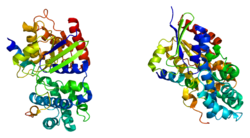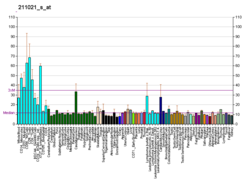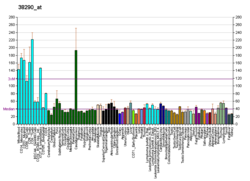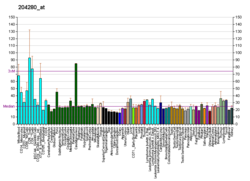Top Qs
Timeline
Chat
Perspective
RGS14
Protein-coding gene in the species Homo sapiens From Wikipedia, the free encyclopedia
Remove ads
Regulator of G-protein signaling 14 (RGS14) is a protein that in humans is encoded by the RGS14 gene.[5]
Remove ads
Function
RGS14 is a member of the regulator of G protein signalling family. This protein contains one RGS domain, two Raf-like Ras-binding domains (RBDs), and one GoLoco motif. The protein attenuates the signaling activity of G-proteins by binding, through its GoLoco domain, to specific types of activated, GTP-bound G alpha subunits. Acting as a GTPase activating protein (GAP), the protein increases the rate of conversion of the GTP to GDP. This hydrolysis allows the G alpha subunits to bind G beta/gamma subunit heterodimers, forming inactive G-protein heterotrimers, thereby terminating the signal. Alternate transcriptional splice variants of this gene have been observed but have not been thoroughly characterized.[5]
Increasing the expression of the RGS14 protein in the V2 secondary visual cortex of mice promotes the conversion of short-term to long-term object-recognition memory.[6] Conversely RGS14 is enriched in CA2 pyramidal neurons and suppresses synaptic plasticity of these synapses and hippocampal-based learning and memory.[7]
Remove ads
Interactions
RGS14 has been shown to interact with:
References
Further reading
External links
Wikiwand - on
Seamless Wikipedia browsing. On steroids.
Remove ads








